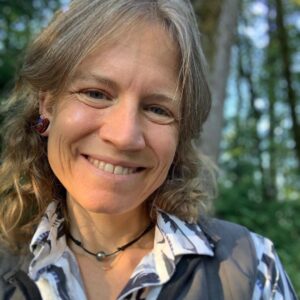| Senior housing models and design have come a long way in the past two decades. Yet, the future of such housing may reside in the hallowed halls of buildings 100 years old or more. From Stanford University to Notre Dame, Duke, and Cornell, retirees are finding communities that are part of a larger campus-often the ones they traversed in their youth. The growth of retirement communities affiliated with academic institutions has been slow but steady over the past two decades. By 1995, perhaps two dozen communities could claim a formal or informal relationship with a host university or college. However, because of a near “perfect storm” involving today’s retirees, housing providers, and academic institutions, as many as 100 such communities have either opened or gone into development since then. With more than 4,000 universities and colleges in the United States, even a 10% participation rate could result in more than 400 such communities in the next 20 years. Nor is the interest solely domestic. Institutions in Europe, Asia, and Australia are exploring this concept for their own aging populations. What’s Driving the “Storm”?
Unlike their Depression-era parents, today’s retirees and their younger baby-boomer brethren are not tied to their family homes. According to the most recent Del Webb opinion survey, Baby Boomer Report, a full 59% of younger Boomers (41 to 49) plan on purchasing a new home for retirement. But only 16% of current retirees in a 2005 survey by the Senior Advantage Real Estate Council selected their new home because it was in an age-based/restricted community. After inventing the large suburbs, attending large high schools and universities, and settling into careers with some of the nation’s biggest employers, these individuals have never been either bored or alone. Whether attending a football game through The Village at Penn State (tickets are guaranteed with residency), or enjoying music concerts or classes at Oberlin College through Kendal at Oberlin, their ability to find intellectually stimulating and socially congregate environments far exceeds any desire to settle into traditional retirements. Providers can see that long-term growth of the senior housing industry is guaranteed by force of sheer demographics. Top providers, though, have been seeking the “next generation” model capable of delivering a unique competitive advantage in a crowded and increasingly generic field. By accessing the resources of established universities, providers can convert the traditional “Four Bs” of activities from “bingo, birthdays, Bible, and bridge” to “ballet, basketball, biostatistics, and biology.” Better yet, they can do so at little to no cost while tapping into a market whose brand loyalty was established up to 50 years prior to purchase, and whose supply will never end as long as the university exits. Despite record enrollments today, strategic plans for the nation’s institutions of higher education include one significant reality: The population of inbound students will begin to decline after 2011. Faced with the possibility of excess capacity, institutions are realizing the opportunity to “recycle” their previous customers while gaining potential philanthropic benefits. Not Without Problems
Even with this opportunity, the development of university retirement communities has not been problem free. Two of the movement’s “founding fathers,” Meadowood Retirement Community at Indiana University and Green Hills at Iowa State, faced bankruptcy before turning day-to-day operations over to professional senior housing management providers. Other universities have paid the price for attempting to establish and/or own “country club” communities for faculty and alumni without having the expertise needed for long-term senior housing success. On the provider side, many have been reluctant to deal with institutional bureaucracies and politics, or to take advantage of campus resources once the community is full. At one mid-Atlantic campus, the housing provider and university administration essentially went their separate ways when the university president began receiving calls complaining about the community’s food and as provider frustrations in working with multiple academic departments took hold. The Five-Criteria Model
Despite these issues, consumer demand for such communities continues to grow. Thus, in an attempt to learn from the past and provide a road map for future success, the George Mason University Program in Assisted Living/Senior Housing Administration has established a five-criteria model to define the best approach for a new and distinct form of senior housing: University-Based Retirement Communities, or UBRCs. Mason criteria to be considered in the design and operation of a UBRC include: - A location within an accessible distance (preferably one mile or less) of core campus facilities, such as theaters, sports complexes, and classrooms. For retirees, the ability to access and feel a part of the campus is critical. One southeastern community claims a link to two different universities in its marketing materials-but the community itself is located several miles outside the town shared by these institutions, making daily access unrealistic for most residents.
- Formalized programming that ensures integration between community residents and university students, faculty, and staff. To be considered a UBRC, such programming must be documented, a criterion that can be met by written letters of agreement between the community and academic units detailing the ability of residents to take classes, attend events, and use specific campus services. In addition, university involvement should be “inbound” to the community; i.e., in the form of student internships, paid and volunteer work opportunities, and potential research related to senior housing environments. This dual programming component is crucial to making UBRCs literally intergenerational, as opposed to focusing solely on retirees.
A method proposed by Mason for meeting the above criteria is to establish a coordinating entity, such as a singular academic department that maintains an advisory board of representatives from both the university and housing provider. This could, in turn, include an administrator, such as a “Dean of Residents,” to both monitor and manage UBRC program content and quality. - Inclusion of the full continuum of senior housing services, including independent living, assisted living, skilled nursing, and dementia care, as needed. While some university communities have been established solely as independent living, they challenge the industry experience of such residents averaging 75 to 80 years of age, and even many active adult communities with residents age 70+ at move-in, whose needs change markedly as they age. Look at it this way: Without a full continuum, who’s going to tell the retired university president that he or she has to move off-campus when extended levels of care are required? Furthermore, if philanthropic potential is a prime reason for institutions to host communities, why offer a model likely to force residents to leave before they can show their gratitude?
- A documented financial relationship between the university and the senior housing provider. As stated above, such a relationship does not mean the school has to own the community. Indeed, some have been able to establish a straight land lease (such as with Stanford and Classic Residence by Hyatt), which offers the institution financial benefits and senior housing expertise while avoiding the direct risk involved in providing long-term care. Other financial linkages, such as sharing of landscaping, parking, and purchasing contracts, can ensure that both parties have a stake in the long-term success of the community. Whatever its ownership, the community need never undergo the “stranger on campus” scenario farther down the road.
- Communities should target and document that at least 10% of their residents have some connection to the university, either as alumni, retired faculty, or staff (or family of the same). Although this can be a challenge for urban schools (with rural schools, this connection may be the chief selling feature and apply to 50% of residents or more), such an “indigenous” resident presence is important to bring the culture and feel of the host institution into the community.
Build It and They Will Come
All five of these UBRC criteria are designed with a single purpose in mind: to provide retirees assurance of receiving the active and intellectually stimulating quality of life they desire from a university retirement community. The Mason program hopes that by using these criteria, current and new communities will strive to achieve UBRC status, while others can at least describe themselves as “linked” or “affiliated.” (For a listing of some of the communities deemed to meet the UBRC criteria, see “What Is a ‘UBRC’?,”) George Mason also hopes to start a national association of such communities to help more clearly categorize their status and foster their development and growth. Ultimately, the decision to add a retirement community to a campus environment must combine pragmatic business and design considerations with a commitment to maintaining the “school spirit” so inherent to the model’s success. Done correctly, such communities represent a win-win scenario for all parties involved-especially for those whose alma maters served as the launching platform for so many life journeys now entering a new phase.
Andrew Carle is Director of the Program in Assisted Living/Senior Housing Administration at George Mason University and a national expert on university-based retirement communities. He developed the UBRC criteria and acronym to address broad disparities among current models of university retirement communities. For more information, phone (703) 993-1900 or visit www.assistedliving.gmu.edu. To send your comments to the author and editors, e-mail carle0906@nursinghomesmagazine.com. |











